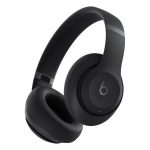
Space Exploration Technologies Corp.’s (SpaceX) has filed an application with the Federal Communications Commission (FCC) for testing a new variant of its user terminal for the company’s Starlink satellite internet constellation. The application was filed with the Commission’s Office of Experimental Testing (OET) yesterday, and it lists down different specifications for the terminal’s receiving antenna when compared against SpaceX’s previous filings. The Starlink terminals are used by users to connect with the orbiting satellites, which then relay the data to one of the many ground stations scattered all over the continental United States.
Starlink User Terminal To Test Different Parameters For Receiving Antenna
In its application, SpaceX asks the FCC to grant it temporary authority to test five new user terminals in California, Colorado, Texas, Utah and Washington. These terminals will use the same uplink and downlink frequencies as the ones being used by the Starlink beta testers.
However, while they will use the same frequencies, parameters for their send and receiving antennas are different from those which have surfaced in SpaceX’s previous FCC applications. Based on these differences, it’s clear that while the company is not testing a brand new design for its Starlink user terminals, it is testing the effect tweaking key specifications will have on performance.
The consumer terminals have two separate antenna parameters, one for transmitting signals and the other for receiving them. In the latest FCC filing, the parameters for the transmitting antenna are similar to the ones present in an earlier application filed by SpaceX requesting the regulatory body to allow it to test Starlink terminals on vehicles in Redmond, Washington.

The transmitting (TX) antenna’s parameters, namely its gain, half-power beamwidth, effective isotropic radiated power (EIRP) and effective radiated power (ERP) remain unchanged in the new applications over the application filed for the vehicle test.
However, parameters for the radiating (RX) antenna are different, which indicates the different nature of the two tests. For the Starlink user terminal, the transmitting antenna is responsible for sending the user data to the orbiting satellites and the receiving antenna is responsible for receiving the data.
The first thing to note is that the area of the receiving antenna is smaller in the new filing, which then ends up corresponding with a decrease in its key parameters. First of all, its Gain, which describes its ability to convert the signals received into electrical power is lesser. While on the surface it may appear to hinder performance, this does correspond well with SpaceX’s recent win at the FCC which allowed it to lower satellite altitudes.

A lower gain decreases the antenna’s range but increases the area it covers. In essence, the new tests should allow SpaceX to determine if the user terminals can receive signals from a wider area when compared to those mounted on a moving vehicle.
The second parameter which is different is the figure of merit. Measured as Decibels divided by Kelvins, this measures the gain of an antenna relative to the noise it receives. For the moving vehicle test, the user terminal had a noise temperature of 3.25 Kelvin, lower than the new terminal’s 3.7K. This temperature is not a physical reading; instead, it is determined through the temperature change in a hypothetical resistor due to antenna noise.
Finally, the emission designators for both terminals are the same, indicating that the differences quoted above are minor. However, interestingly, the designator for another filing in which SpaceX requests the Commission authority to test the dishes on the sea platform is different. An emissions designator is used by the FCC and other agencies to describe the bandwidth of the signals, and the one used by the sea platform indicates a lower bandwidth.
The post New Starlink User Dish With Smaller Antenna Pops Up In FCC Filing by Ramish Zafar appeared first on Wccftech.
Powered by WPeMatico





